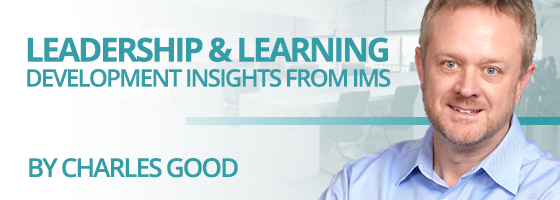Everyone knows Leonardo Da Vinci’s famous artworks, such as the Mona Lisa and the Last Supper. Some may not realize, however, that he is also considered the ultimate ‘Renaissance” man, whose talents crossed into many different fields. Da Vinci is one of history’s most prolific inventors, who spent much of his time working in the science and technology fields. He conceived of flying machines, work tools, and war machines long before the technology existed to build them. Creating like Da Vinci is what many artists, engineers, and even managers, aspire to.
In a recent IMS program, Michael Gelb, the best-selling author of How to Think like Leonardo da Vinci and Da Vinci scholar, provided the seven principles that Da Vinci embodied throughout his life. As you read each one of these principles try to find ways to incorporate them into your life.
- Curiosita – an insatiable curious approach to life and unrelenting quest for continuous learning. Da Vinci had an intense curiosity to understand and absorb things. He maintained a child-like curiosity and was always asking questions.
- Dimonstrazione – a commitment to test knowledge through experience along with questioning your opinions, beliefs, and assumptions. It is critical to test your knowledge in the real world and learn from your mistakes.
- Sensazione – the refinement of the senses, especially sight, to enlighten experience. Da Vinci took in the world with all of his five senses and stated, “An average human looks without seeing, listens without hearing, touches without feeling, eats without tasting, moves without physical awareness, inhales without awareness of odor or fragrance, and talks without thinking.”
- Sfumato – a willingness to embrace ambiguity and uncertainty. In today’s society, this quality is critical by all leaders. Highly creative people have high ‘confusion endurance,’ allowing them to engage and be comfortable with higher levels of uncertainty.
- Arte/Scienza – use whole-brain thinking to balance your studies between the art and sciences. Leonardo urged his students to “study the science of art and the art of science.”
- Corporalita – cultivating both your mind and body. This mind-body connection refers to how your thoughts and feelings affect your physical well-being and how your physical well-being impacts your thought processes.
- Connessione – the power of building systems and realizing the interconnectedness of all things. This ability to see connections between things that others do not is the hallmark of genius.
The book, Beyond Intelligence, has some great exercises that will allow you to practice many of these principles. One such test is the alternate uses test that has you identify as many possible uses for ordinary, everyday objects. The book also includes exercises that have you find similarities between unrelated things. For example, how is a pumpkin like a propeller? Also, the recent IMS blog article on October 21 lists several proven techniques on how to be more curious by asking better questions.
So keep practicing and applying these principles, and in time you will be creating like Da Vinci. Remember, It is not what you know that counts but what you do consistently that makes a difference. Leonardo states this more eloquently by saying, “I have been impressed with the urgency of doing. Knowing is not enough; we must apply. Being willing is not enough; we must do.”
ABOUT CHARLES GOOD
Charles Good is the president of The Institute for Management Studies, which provides transformational learning experiences that drive behavioral change and develop exceptional leaders. Charles is an innovative and resourceful leader who specializes in bringing people together to develop creative organizational and talent strategies that enable business results. His areas of expertise include assessing organizational skill gaps and leading the design, creation and delivery of high impact, innovative learning solutions that achieve business goals.
